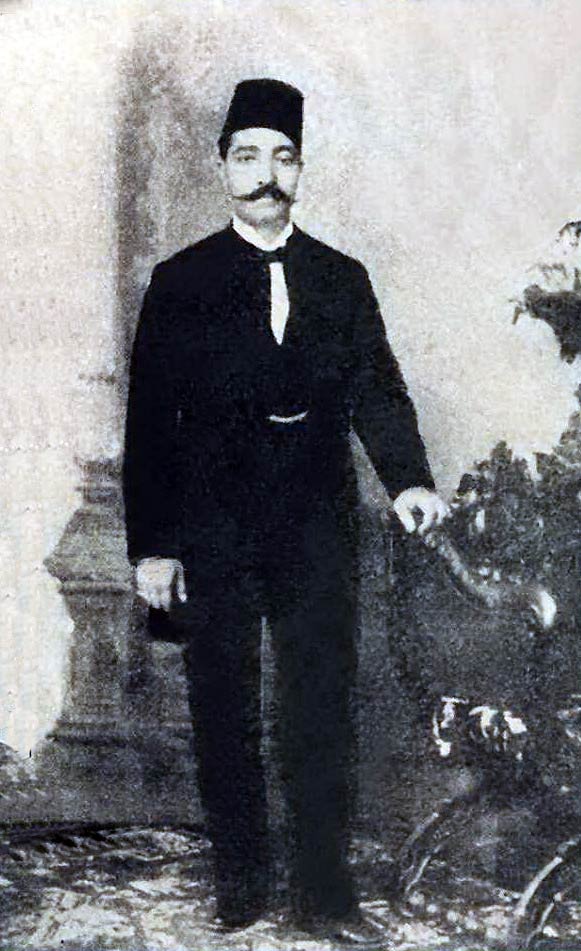Images
All images are courtesy of AMAR Foundation

search

All images are courtesy of AMAR Foundation

Dawr Fī el-bu‘di yāmā (2)
The Arab Music Archiving and Research foundation (AMAR), in collaboration with the Sharjah Art Foundation (SAF), presents Sama‘.
Sama‘ is a show that discusses our musical heritage through comparison and analysis…
A concept by Mustafa Said.
Dear listeners,
Welcome to a new episode of Sama‘.
In this episode, we will resume our discussion about dawr Fī el-bu‘di yāmā.
We heard ‘Abd al-Ḥayy Ḥilmī in our previous episode.
Today, let us start with him…
(♩)
Now, let us go at least 6 years back and listen to this same excerpt performed by Sī ‘Abduh al-Ḥāmūlī…
(♩)
Have you noticed how similar their performance of el-el-muhga wa’t el-ghiyāb is? It confirms that ‘Abd al-Ḥayy Ḥilmī probably did work in Sī ‘Abduh al-Ḥāmūlī’s biṭāna, as the story goes.
Let us now listen to the same part performed by Ṣāliḥ ‘Abd al-Ḥayy, the nephew of ‘Abd al-Ḥayy Ḥilmī, in the Radio’s recording…
(♩)
Incredible similarity… Similarity and creativity at once…
‘Abd al-Ḥayy’s tafrīd sings a lot to the bayyātī and the ṣabā, while Sheikh Yūsuf’s tafrīd is set to the sixth scale-step of the ‘ushshāq maqām, i.e the kardān.
Let us listen a little to Sheikh Yūsuf’s tafrīda to the ‘ushshāq…
(♩)
Sayyid al-Safṭī enters directly from the tafrīd, and performs the taslīm of the waḥāyid to the khātima.
We will listen to his full recording made by Polyphon…
after which we will describe how each performer dealt with the waḥāyid of this dawr:
Sayyid al-Safṭī dealt with the tafrīd and with the waḥāyid as with a very ordinary dawr: a ṣayḥa (scream), a khitām (conclusion)… etc, in a very concise manner. He recorded the dawr on two sides;
contrary to ‘Abd al-Ḥayy for example who recorded it on 3 sides;
Sheikh Yūsuf recorded it on 4 sides with Gramophone;
and Muḥammad Sālim recorded it on 3 very large sides.
The point is that Sheikh Sayyid al-Safṭī’s concise recording was not a template version as his interpretation was very creative.
Let us listen to the dawr and focus on his shift from the tafrīd section to the waḥāyid then to the khitām…
(♩)
Wow Sheikh Sayyid! Marvellous! So succinct!
Muḥammad Sālim performed a very strange waḥda through which he seems to have been preparing for albī ‘alēk, ‘alēk albī to the rāst. Let us listen to it…
(♩)
Whereas Sheikh Yūsuf sang waḥāyid, then the tafrīd, then waḥāyid again. He sometimes followed his inspiration, not the required sequence. He may have heard the dawr performed in this manner by Muḥammad ‘Uthmān, God only knows.
Note that ‘Abd al-Ḥayy let down a whole part of the dawr — in the excerpt played in our previous episode — in the waḥāyid section, then went to the jawāb and concluded.
Let us end today’s episode of Sama‘ with dawr Fī el-bu‘di yāmā performed by Sheikh Yūsuf al-Manyalāwī and his biṭāna most probably led by ‘Alī ‘Abd al-Bārī, accompanied by Ḥasan the son of Yūsuf al-Manyalāwī, the takht of Muḥammad Afandī al-‘Aqqād (qānūn), Ibrāhīm Afandī Sahlūn (kamān), ‘Alī Afandī ‘Abduh Ṣāliḥ (nāy), and Muḥammad Abū Kāmil al-raqqāq (percussions). It was recorded by Gramophone, and published in 2011 by AMAR within Sheikh Yūsuf al-Manyalāwī’s complete collection on the occasion of the centenary of Sheikh Yūsuf al-Manyalāwī’s death.
We will meet again in a new episode to resume our discussion about dawr Fī el-bu‘di yāmā.
(♩)
Sama‘ was presented to you by AMAR.